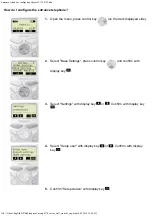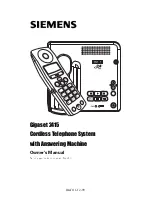
4-15
IP Phone Interface
An additional Media Gateway Interface (MGI) card is not required for calls between local IP
phones, but must be installed to allow IP phones to call digital keysets and non-IP phones.
There are two types of MGI card: MGI2 and MGI3. Up to five MGI2 cards, or up to two MGI3
cards, can be installed per system. The MGI3 card is required for Internet fax.
ISDN Service
Primary Rate Interface (PRI)
The system supports Primary Rate Interface (PRI) ISDN. Simultaneous data calls, calling
party and calling line identification, high-speed call setup and disconnect are among the
benefits of ISDN calling. The 30B+D configuration of ISDN allows call information to be
delivered via the data channel (the “D” of 30B+D) thus leaving the bearer channels (the “B” of
30B+D) available for single use or combined use to provide a wider bandwidth for data and
video.
Basic Rate Interface (BRI)
The BRI card supports trunk or station level Basic Rate Interface services (BRI). Trunk or
station BRI use is software programmable. BRI allows simultaneous data calls, called party
and calling number identification, high-speed call setup and disconnect among other benefits
of ISDN calling. The 2B+D configuration of ISDN allows call information to be delivered via
the data channel (the “D” of 2B+D) thus leaving the bearer channels (the “B” of 2B+D)
available for single use or combined use to provide a wider bandwidth for data and video.
Large LCD Phone Interface
Large LCD phones provide various features such as Virtual AOM, a Phone Book, and
enblock/overlap dialling. LCD navigation (similar to that of a mobile phone) using navigation
keys and menu/feature selection keys allows users to select features, discussed in this
chapter, without the need for programmable keys or feature codes.
Least Cost Routing
Least Cost Routing (LCR) is the ability to automatically select the most cost effective central
office route for the outside number dialled by any station. The system LCR program includes
the following features:
y
Option to use or not use LCR on a tenant basis
y
Programmable LCR access code
y
Digit analysis table: 2000 entries, each with 10 digits
y
Routing by time of day and day of week (four time bands per day)
y
Routing according to individual station class
y
Modify digits table: 200 entries
y
Flexible trunk group advance timer
y
Option to use trunk group advance warning tones















































